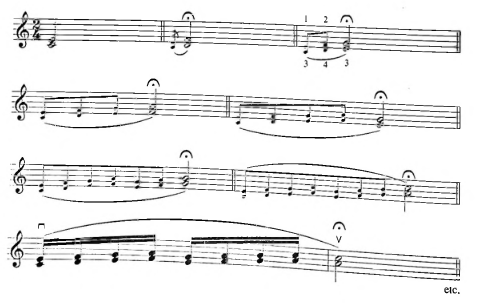Violin teacher Zakhar Bron provides tips for practising the op.35 no.8 Etude by Dont
This article is taken from the May 1999 issue of The Strad. To read the first article in this series from April 1999, click here.
Having based his teaching on the classical Russian violin school, following his own studies with Igor Oistral, Zakhar Bron has achieved international acclaim as the teacher of Siberian violinists Maxim Vengerov and Vadim Repin His first published book is Etuden-kunst (Art of the Etude), from which this study is taken. It includes commentaries on etudes by Dont. Paganini and Wieniawski, together with exercises designed to save time and energy with focused and conscious practice.
The virtuoso repertoire of violinists requires a solid technique when playing thiids. At the same time tin’s technique offers one of the best ways to train the finger muscles of the left hand.
This Dont study op.35 no.8 Allegro concentrates on three main aspects of technique:
1. A full singing tone
2. Lightness and agility of the left hand
3. Good intonation
A full singing tone
Here we address the problem of co-ordination: one hand follows the natural reflect of synchronising its movements with the other hand. Any tension or inflexible position changes in the left hand can lead to problems in the legato of the right hand.
To develop the independence of both hands I recommend the following exercise:

Lightness and agility of the left hand
There are three problems which need solving:
a) Position changes. Placement and angle of the left hand
A common mistake is the exclusive concentration of on intonation without considering the placement and angle of the left hand. When the hand position is not correct, ease and agility in all positions, and thus good intonation, becomes impossible. To develop a good position I first recommend exploring thirds with the following exercise:

Finger placement should be lightly rounded (note especially the angle of the little finger) and should remain unchanged in all positions. This exercise also assists in developing sensitivity to the difference between major and minor thirds.
b) Articulation
The groups of muscles needed in the fingers for a good technique when playing thirds will best be trained by the following exercises:

To solve the problems connected with this etude, all these exercuses should be practised in every position.
c) String changes
It is important to avoid lifting the hand when crossing the strings. One finger should always remaind in contact with the string.
Good intonation
The so-called perfect intervals (unisons, fourths, fifths and octaves) are not variable. There are, however different concepts of thirds and sixths and tenths et cetera. In my opinion the differences between major and minor thirds should be clearly emphasised. Although every third in itself may be sharp, one achieves in their conjunction the acoustical effect of narrow semitones.
One should avoid intonation that opposes the physical and acoustical possibilities of the violin. For this reason I recommend the use of open strings whenever possible, including in all perfect intervals which can be built on open strings.
Translated by Evelyn Chadwick
© 1998 Ries Erlei; Berlin
Technique: Playing with expression
- 1
- 2
- 3
- 4
- 5
- 6
- 7
 Currently reading
Currently readingViolin Masterclass: Playing Thirds in Dont’s Etude op.35 no.8
- 8
- 9
- 10































































No comments yet